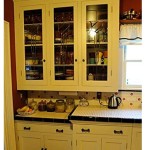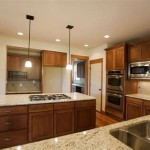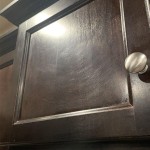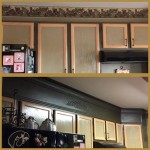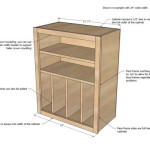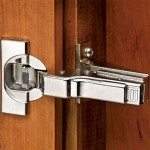What Saw To Use To Cut Cabinets
Selecting the appropriate saw for cutting cabinets is crucial for achieving clean, accurate, and professional-looking results. The type of saw used greatly influences the quality of the cut, the ease of handling, and the overall efficiency of the cabinet making or remodeling process. Understanding the characteristics of different saws and their suitability for specific cabinet materials and cutting tasks is essential for both experienced woodworkers and DIY enthusiasts.
Cabinets are typically constructed from a variety of materials, including solid wood, plywood, particleboard, medium-density fiberboard (MDF), and laminate. Each of these materials presents unique challenges when cutting. Solid wood, while generally easier to work with than engineered wood products, can splinter easily if not cut with a sharp blade and appropriate technique. Plywood is susceptible to delamination, especially when cut across the grain. Particleboard and MDF are known for producing significant amounts of dust during cutting and can quickly dull saw blades. Laminates are prone to chipping and cracking if not handled carefully.
Therefore, choosing the right saw and blade combination for the specific material being used is paramount. Several types of saws are commonly employed in cabinet work, each with its own strengths and weaknesses: circular saws, table saws, jigsaws, miter saws, and track saws. Each saw type is best suited for particular tasks, and a well-equipped workshop will often include a combination of these tools.
Circular Saws for Cutting Cabinets
The circular saw is a versatile, handheld power saw commonly used for making straight cuts in sheet goods like plywood and MDF. Its portability makes it ideal for on-site work and for cutting large pieces of material that are difficult to maneuver on a table saw. However, achieving perfectly straight cuts with a circular saw requires skill and attention to detail.
When using a circular saw for cabinet work, it is essential to use a high-quality blade specifically designed for cutting plywood or laminates. These blades typically have a higher tooth count (60 teeth or more) and a specialized tooth geometry that minimizes splintering and tear-out. A sharp blade is also crucial to prevent the saw from bogging down and producing a rough cut.
To ensure accurate cuts, using a guide is highly recommended. A straight edge clamped to the workpiece can serve as a reliable guide for the circular saw base, allowing for precise and repeatable cuts. Another option is to use a circular saw track, which provides a stable and low-friction surface for the saw to glide along. Using a track saw system offers even more precision and minimizes the risk of the saw wandering off course.
Cutting cabinets with a circular saw often involves scoring the surface of the material before making the full cut. This technique involves making a shallow pass with the saw along the cut line, just deep enough to score the surface layer. This helps to prevent splintering and chipping, particularly when cutting laminates or veneered plywood.
Dust collection is another important consideration when using a circular saw, especially when working with particleboard or MDF. These materials produce a fine dust that can be harmful to breathe and can quickly accumulate in the workspace. Many circular saws are equipped with dust ports that can be connected to a vacuum or dust collection system.
Table Saws for Cutting Cabinets
The table saw is a stationary power saw commonly used for making precise rip cuts (cuts parallel to the grain) and crosscuts (cuts perpendicular to the grain) in solid wood and sheet goods. Its large, stable table provides a solid platform for supporting the workpiece, making it easier to achieve accurate and consistent cuts. The table saw is considered a cornerstone tool in most cabinet making shops.
For cabinet work, a table saw equipped with a high-quality blade is essential. As with circular saws, a blade with a high tooth count is recommended for cutting plywood and laminates. A blade with alternating top bevel (ATB) teeth is a good choice for general-purpose cutting, while a triple-chip grind (TCG) blade is ideal for cutting melamine and other hard materials that are prone to chipping.
The table saw's fence is critical for achieving accurate rip cuts. A well-adjusted and calibrated fence will ensure that the cut is parallel to the blade and of the desired width. For crosscuts, a miter gauge or a crosscut sled can be used to guide the workpiece and ensure square cuts. A crosscut sled provides even greater accuracy and control, as it supports the workpiece on both sides of the blade.
When cutting large sheets of plywood or MDF on a table saw, it is important to provide adequate support to prevent the material from sagging or tipping. Outfeed tables and side supports can be used to extend the table saw's work surface and provide additional stability. The use of rollers can also help ease the movement of large sheet goods across the table.
Safety is paramount when operating a table saw. Always wear eye protection and hearing protection, and use push sticks or push blocks to keep hands away from the blade. Be aware of the risk of kickback, which occurs when the workpiece is pinched between the blade and the fence. Anti-kickback pawls and splitters can help to prevent kickback and reduce the risk of injury. Additionally, ensure the blade is sharp and appropriately aligned for the material you are cutting.
Specialized Saws for Specific Cabinet Tasks
While circular saws and table saws are essential for general cabinet work, other specialized saws can be valuable for specific tasks. Miter saws, jigsaws, and track saws offer unique capabilities that can enhance the precision and efficiency of the cabinet making process.
Miter saws, also known as chop saws, are primarily used for making accurate angle cuts on trim and molding. They are particularly useful for cutting cabinet face frames and door stiles and rails. A compound miter saw can also make bevel cuts, which are angled cuts that are not perpendicular to the surface of the workpiece. Compound miter saws are valuable for creating complex joinery and decorative details.
Jigsaws are versatile, handheld saws that are used for making curved cuts and intricate shapes. They are often used for cutting sink cutouts in countertops and for creating decorative profiles on cabinet doors and panels. The jigsaw's narrow blade allows it to maneuver easily through tight curves and complex shapes. However, it is important to use a sharp blade and proper technique to minimize splintering and tear-out. Using a scrolling blade will also aid in executing curved patterns.
Track saws, also sometimes referred to as plunge saws, combine the portability of a circular saw with the accuracy of a table saw. A track saw consists of a circular saw that rides along a guide rail, allowing for perfectly straight and splinter-free cuts in sheet goods. Track saws are particularly useful for cutting large sheets of plywood and MDF, as they can be used to make cuts that would be difficult or impossible to make on a table saw alone. Track saws are becoming increasingly popular among cabinet makers due to their accuracy, ease of use, and portability.
Ultimately, the best saw for cutting cabinets depends on the specific tasks being performed and the materials being used. While a well-equipped workshop will include a variety of saws, it is important to select the appropriate tool for each job to ensure accurate, clean, and professional-looking results. Considerations for budget, available space, and frequency of use should also be factored in when choosing which saws to acquire.
Investing in high-quality blades is just as important as choosing the right saw. A sharp blade will cut more cleanly and efficiently, reducing the risk of splintering and tear-out. It also places less strain on the saw motor, prolonging its lifespan. When selecting blades, consider the type of material being cut, the desired finish, and the speed of the cut. Experiment with different blade types to find the best combination for your specific needs.

Do You Need A Table Saw To Build Cabinets Pine And Poplar

How To Use Your Jigsaw And Still Have Clean Cuts

Cutting A Cabinet With Circular Saw To Get Around Pipe

Track Saw Vs Table For Cabinet Making And Building

Tips For Making Cabinets Square With A Circular Saw

How To Use An Oscillating Tool

Kitchen Cabinet Cutting Tips Step By Guide Rosene Door And Custom Interior Doors In Toronto Gta

How To Make Kitchen Cabinet Doors The Happy Housewife Home Management

Diy Kitchen Cabinets Made From Only Plywood

Cutting Down A Kitchen Cabinet To Fit
Related Posts

